Table of Contents
ToggleIn a world where ideas are the currency of innovation, “idea tech” is the shiny new coin everyone wants to spend. It’s not just about flashy gadgets or futuristic apps. It’s about harnessing creativity and technology to turn wild thoughts into reality. Imagine a place where brainstorming meets coding, and innovation flows like coffee on a Monday morning—sounds invigorating, right?
Overview of Idea Tech
Idea tech integrates creativity and technology to develop innovative solutions. This approach emphasizes the power of imagination in driving advancements across various industries.
Definition and Origin
Idea tech refers to the synthesis of innovative thinking with technological applications. It emerged from the need for collaboration between creative ideas and practical technology. This concept gained traction in the late 20th century as digital technologies advanced rapidly. Pioneers in tech and entrepreneurship recognized the value of turning abstract concepts into viable products. Collaboration among diverse professionals, including artists and engineers, fosters this dynamic field.
Importance in Today’s World
The role of idea tech in contemporary society is crucial. It shapes various sectors, including education, healthcare, and entertainment, by enhancing problem-solving capabilities. Businesses leverage idea tech for competitive advantages, turning unique concepts into marketable solutions. Consumers benefit from improved products and services that stem from this integration. As global challenges arise, idea tech becomes essential for driving sustainable innovation and economic growth.
Key Features of Idea Tech
Idea tech embodies essential features that drive innovation. Two prominent aspects are innovation and creativity, along with usability and accessibility.
Innovation and Creativity
Innovation and creativity flourish within idea tech. Collaboration across disciplines often leads to groundbreaking solutions. Creatives like designers and artists contribute unique perspectives, enhancing technological applications. Providing platforms for brainstorming encourages teams to transform abstract concepts into functional products. Tools like digital whiteboards and brainstorming apps stimulate this exchange of ideas. Many organizations now prioritize an open environment where innovative thinking thrives, resulting in a rich tapestry of diverse solutions.
Usability and Accessibility
Usability and accessibility are crucial components of idea tech. Effective products cater to users’ needs, making them intuitive and straightforward. Accessible design ensures that individuals with disabilities can engage with technology seamlessly. Many companies focus on user experience, integrating feedback loops to refine their offerings continually. Adopting inclusive design principles promotes wider adoption and encourages participation from various demographic groups. Feedback mechanisms help developers align products with real-world user challenges.
Applications of Idea Tech
Idea tech finds widespread applications across various sectors, redefining how problems are approached and solved.
In Education
Education leverages idea tech to enhance learning experiences. Virtual reality tools immerse students in interactive environments, making complex subjects more engaging. Online platforms facilitate collaborative projects, allowing students from different locations to work together effectively. Gamification transforms traditional learning by introducing competition and interactive elements, motivating students to participate actively. Innovative assessment methods, powered by data analytics, provide personalized feedback to learners, helping them improve continuously.
In Business
In the business landscape, idea tech drives efficiency and innovation. Companies utilize artificial intelligence for data analysis, streamlining processes and enhancing decision-making. Collaborative tools foster teamwork, enabling employees to share ideas and develop projects in real-time. Customer relationship management systems optimize client interactions, improving satisfaction and retention rates. Marketing campaigns benefit from data insights, enabling the creation of targeted strategies that reach specific demographics effectively, ultimately leading to increased sales and brand loyalty.
Benefits of Idea Tech
Idea tech offers numerous advantages that contribute to innovation and efficiency across various sectors. Its prominence in enhancing productivity and fostering collaboration has reshaped how businesses and individuals operate.
Enhancing Productivity
Idea tech streamlines workflows by integrating advanced tools that automate repetitive tasks. Utilizing artificial intelligence can optimize data analysis, enabling quicker decision-making. Furthermore, innovative platforms facilitate seamless project management, allowing teams to track progress effectively. Teams accomplish more in less time by utilizing digital collaboration tools, ensuring goals align with strategic objectives. Observing real-time data facilitates quicker adjustments, making operations more responsive to market changes. Improved resource allocation becomes possible as businesses gain insights into performance metrics, enhancing overall efficiency.
Fostering Collaboration
Collaboration flourishes in environments enriched by idea tech, breaking down silos between departments. Tools like digital whiteboards and brainstorming apps encourage creative exchanges, enabling diverse ideas to merge. Accessible communication platforms ensure everyone stays connected regardless of physical location. As individuals collaborate, a variety of perspectives enrich solutions, driving innovation. Regular feedback loops further synchronize team efforts, aligning everyone with shared goals. Networking opportunities expand, allowing professionals to engage with industry leaders, increasing knowledge and inspiration.
Challenges and Limitations
Idea tech faces several challenges that may hinder its effectiveness.
Integration Issues
Integration poses a significant hurdle for idea tech. Organizations often struggle to align new technologies with existing systems. Lack of interoperability can disrupt workflow and lead to inefficiencies. Companies may encounter resistance from employees who are accustomed to traditional processes. It becomes essential for leaders to provide training and support to bridge this gap. Additionally, technical issues can arise during implementation, complicating the adaptation process. Ensuring data security poses another layer of complexity, as new technologies must comply with regulatory standards. Addressing these integration challenges is crucial for maximizing the benefits of idea tech.
Market Competition
Competition in the idea tech sector is intense, with numerous players vying for market share. Innovators frequently face pressure to differentiate their offerings and stand out. As a result, companies must invest significantly in research and development to keep pace with advancements. Customers often prioritize solutions that demonstrate clear value and unique features. Pricing strategies become critical as businesses aim to attract price-sensitive consumers while maintaining profitability. Strong brand identity can provide a competitive edge, yet it requires continuous engagement with target audiences. Adapting to the evolving market landscape remains vital for sustained success in idea tech.
Idea tech represents a pivotal shift in how creativity and technology intersect to drive innovation. By fostering collaboration and integrating diverse perspectives, it empowers industries to tackle complex challenges effectively. As organizations embrace this approach, they not only enhance their problem-solving capabilities but also create products and services that resonate with consumers.
The ongoing evolution of idea tech underscores its importance in a rapidly changing world. As businesses strive to stay competitive, leveraging idea tech will be crucial for sustainable growth and meaningful advancements. Embracing this dynamic fusion will pave the way for a future where imagination and technology work hand in hand to shape a better tomorrow.







